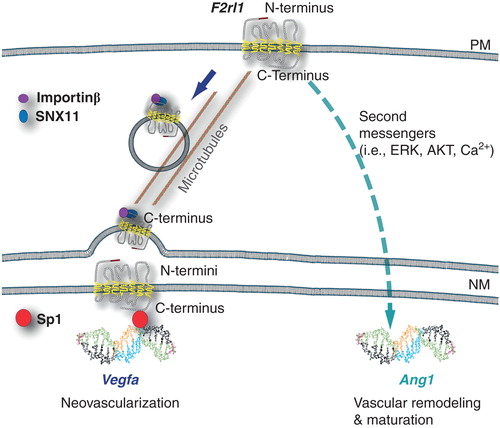Figures & data
Figure 1. Subcellular localization of F2rll governs angiogenesis. Schematic representation of F2rll translocation from the plasma membrane to the cell nucleus, requiring Snxll and importin-β on microtubules; ensuing Vegfa expression involves recruitment of transcription factor (Sp1), whereas signaling from F2rll at the plasma membrane results in Angl expression. Putative orientation of nuclear G-protein coupled receptor (GPCR) with N-termini buried within the nuclear GPCR with n-terminal buried within the nuclear envelope, exposing the C-terminus to the cytoplasm (outer NM) or nucleoplasm (inner NM).

